Butterflies and Moths
Media

Species Types
Scientific Name
Nemoria bistriaria
Description
The red-fringed emerald has two color forms depending on the season. Adults that emerge in summer are green, but those that emerge in spring are tan.
Media
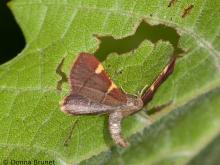
Species Types
Scientific Name
More than 680 species in North America north of Mexico
Description
The pyralids are a large and diverse family of mostly small or medium-sized moths. They often look like they have snouts.
Media
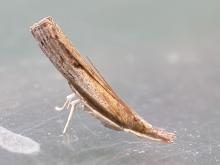
Species Types
Scientific Name
More than 860 species in North America north of Mexico
Description
Crambid snout moths are named for the mouthparts that project outward like a snout. They are very similar to the closely related family of pyralid moths.
Media
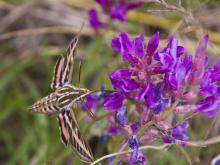
Species Types
Scientific Name
More than 50 species in Missouri
Description
Sphinx moths are usually large and heavy bodied, with a long, pointed abdomen. Members of this family often hover near flowers, feeding on nectar and looking like hummingbirds or bumblebees.
Media
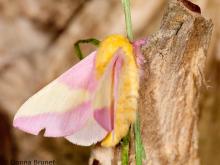
Species Types
Scientific Name
Dryocampa rubicunda
Description
The rosy maple moth has a variable coloration. In most cases, it is white or cream-colored, with some amount of pink at the outer and inner portions of the wings.
Media

Species Types
Scientific Name
Hemaris diffinis
Description
The snowberry clearwing is a moth that confuses people because it looks like a bumblebee and flies like a hummingbird!
Media

Species Types
Scientific Name
Harrisina americana
Description
Grapeleaf skeletonizer moths have all-black wings that they typically hold flat, away from the body. There is an unbroken collar of red or orange behind the black head.
Media
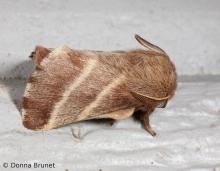
Species Types
Scientific Name
About 35 species in North America north of Mexico
Description
Tent caterpillar moths and lappet moths are medium-sized, with thick, long scales that make them look furry. The abdomen usually extends past the wings when they are folded back over the body.
Media

Species Types
Scientific Name
About 1,400 species in North America north of Mexico
Description
At rest, tortricid moths often have a distinctive shape, resembling an arrowhead or a bell, with the forewing tips either squared-off or flared outward.
Media
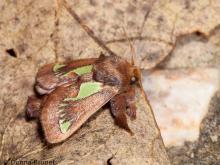
Species Types
Scientific Name
Euclea delphinii
Description
The spiny oak-slug moth is named for its caterpillar, which is armed with gaudy, stiff, stinging spines. If you touch them, the sting can feel something like a bee sting.
See Also


Media

Species Types
Scientific Name
About 1,500 species in North America north of Mexico
Description
Adult caddisflies are mothlike. Their larvae are aquatic and build portable, protective cases out of local materials, including grains of sand, bits of leaves and twigs, and other debris.
Media

Species Types
Scientific Name
Corydalus cornutus
Description
Adult eastern dobsonflies are huge and mothlike, with large wings and a weak, fluttery flight. The fiercely predaceous aquatic larvae, called hellgrammites, are well-known to anglers, who often use them as bait.
About Butterflies and Moths in Missouri
Butterflies, skippers, and moths belong to an insect order called the Lepidoptera — the "scale-winged" insects. These living jewels have tiny, overlapping scales that cover their wings like shingles. The scales, whether muted or colorful, seem dusty if they rub off on your fingers. Many butterflies and moths are associated with particular types of food plants, which their caterpillars must eat in order to survive.





















